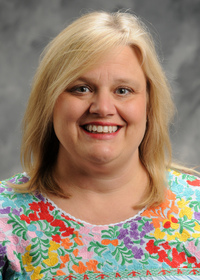Information Possibly Outdated
The information presented on this page was originally released on July 12, 2013. It may not be outdated, but please search our site for more current information. If you plan to quote or reference this information in a publication, please check with the Extension specialist or author before proceeding.
Back to school good time to review safety measures
JACKSON – As the carefree days of summer vacation quickly come to a close, parents should take steps to keep their kids safe as they return to the routines of school.
“Parents should keep in mind there are precautions to take no matter how their child gets to and from school,” said Beth Bell, Tallahatchie County child and family development agent with Mississippi State University’s Extension Service.
According to the National Center for Missing and Exploited Children, about 32 percent of attempted stranger abductions take place while children are traveling to or from school or a school-related activity.
Bell recommends that young children be accompanied by an adult if they walk or bike to school.
“I have young children, and I wouldn’t allow them to walk or bike to school alone or even in a group with other children no matter how close to the school we live,” she said. “For me, that’s just too much risk. High school-aged children, though, should have a better perception of danger. But they should always travel in a group.”
Children should use a well-lit, non-secluded route and be aware of safe places along the route to go if they feel afraid or threatened. Bikers should always wear a properly fitting helmet and understand and follow the rules of the road, according to the National Center for Missing and Exploited Children.
Bus riders should wait in groups, and car riders should be dropped off as close to their building as possible. Drivers should be sure the child is inside the building or greeted by a school employee before leaving.
Parents should also take steps to prepare their children if they will be home alone after school, said Karen Benson, Neshoba County Extension coordinator and family and consumer sciences agent with MSU.
Benson recommends children check in with a parent or another trusted adult, such as a neighbor, by phone or text as soon as they arrive home. If any doors or windows are ajar or they notice anything else suspicious about the house, they should not enter and go to a neighbor’s house immediately and call 911, she said. Once inside, they should make sure the house is secure by locking all doors.
Children who are home alone for any length of time should have a few resources at their fingertips.
“Leave a list of emergency phone numbers in an easily accessible place, such as the refrigerator,” Benson said. “The list should include 911 and contact numbers for parents, grandparents and a trusted neighbor. Make sure children know their address and understand what information they should give a 911 operator. Go over first aid basics and store the first aid kit in a convenient location. Make sure they have a weather radio and understand when and where to take shelter.”
Role play is a good way to help children make the right decisions in an emergency situation, such as a fire, tornado or accident, Benson said. She also recommends children who will be home alone take a babysitter’s training course. The course teaches basic CPR along with other safety topics and is offered by several community organizations, including 4-H.
In addition, parents should establish guidelines for answering the phone and the door, playing outdoors and using the computer.
“Children should never let an unknown adult or child know they are home alone,” Benson said. “Parents should know how to check the history on the computer and understand what activity might be risky. Parents and children should have open, honest communication about the use of the computer.”
Cassandra Kirkland, Extension family life specialist, recommends parents consider limiting their children’s access to the Internet.
“There are software packages available for parents who want to limit access to social networking sites or sites with inappropriate content,” Kirkland said. “Net Nanny is a highly rated example.”
For more information on back to school safety, refer to Extension publication 1487, After School Care. Additional information can be found on the National Safety Council website at http://www.nsc.org and The National Center for Missing and Exploited Children website at http//:www.missingkids.org/Safety. Kirkland also recommends the following resources:





